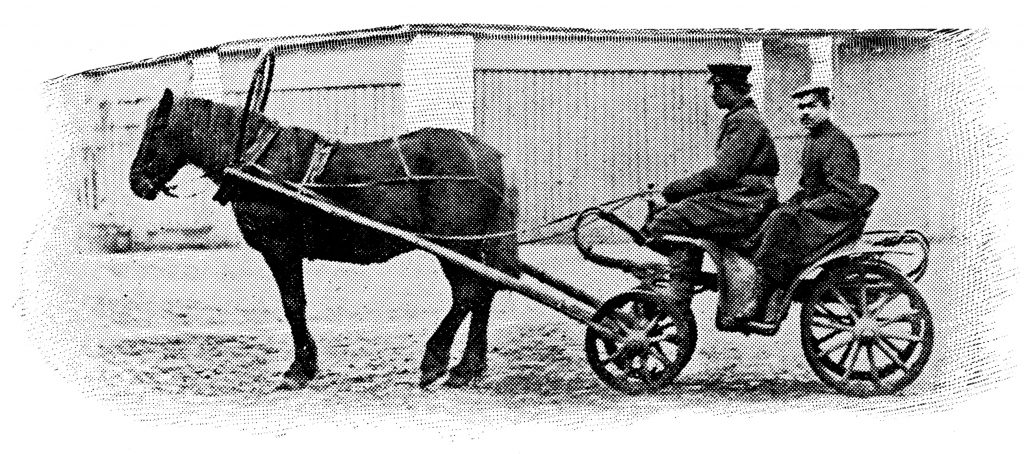What do you do during uncertain economic times or even during the regular, cyclical highs and lows of business?
Do you freak out… close ranks, decrease spending and expenses, and hunker down for the long haul?
Or do you find out… what your customers need during trying times so you can under-promise and over-deliver?
Because when you know what your customers truly need/want/desire, you know how to provide value. And when you provide value to your customers with an amazing customer experience and a great product or service, you’re building connections and relationships that can weather most storms.
Failure to connect with your target audience and build relationships is one of the top reason businesses fail. To stay vibrant and essential, you must know what your target audience is thinking. Know what they think they need, what they don’t know yet what they need, and how to deliver more value than they expect.
Henry Ford said about the motor vehicle: “If I had asked people what they wanted, they would have said faster horses.”
Let’s look at a few case studies of businesses that failed to figure out their customers’ needs and wants in time to keep them as customers.

Sears
Sears started business in the late 1800s as a mail-order catalog and became a powerhouse in the mid- to late-1900s. The advent of the new millennium saw Sears falter, and by 2018, they filed for bankruptcy. Why? What happened?
Baby boomers today can remember a time when delivery of the Sears Catalog was the highlight of their existence. Kids craved these catalogs to help them make their Christmas wish list, and their parents craved the catalog to find what they didn’t know they needed for hearth and home.
Columbia Business School published “Sears: A Case Study in Business Failure” in 2018. It’s an in-depth look at how Sears failed on several levels. One of the most important points, though, is this excerpt from the study:
“[O]f course, it is always all about people. There’s nothing in and of itself that a retailer, with very few exceptions, has in its grasp that is truly proprietary. For the most part, a general merchandise retailer is an assembler of other people’s products. And the organization that does that work has to be clearly, consistently, and constantly led so that to the customer, the store, and the website feels as if it’s the outcome of one person’s efforts, speaks with one voice, with tremendous congruency and consistency.”
Your customers will lead you to success and longevity as long as you stay in touch and learn/innovate/pivot to meet them with what they want, where they want to consume it, and how they want to get it. And you can’t know those things unless you ask your customers—often.
Blockbuster
Again, here is a large corporation that had its customers by the heartstrings. It knew what customers wanted and needed and was poised to deliver that for eternity. But what your customers, prospects, and others want changes all the time. And sometimes they don’t even know what they want. If you can’t pivot to meet your customers, prospects, and target audience today, you’ll struggle when the winds of change turn on you.
If you didn’t know, Netflix’s founder, Reed Hastings, proposed a partnership with Blockbuster in 2000. Needless to say, it did not take. But you and everyone else reading this can imagine the difference to Blockbuster if they only heeded what Netflix said consumers want. Because today, Netflix is huge and Blockbuster is no longer in operation.
Fast forward a few years and find Blockbuster filed for bankruptcy in 2010. In 2014, Netflix is a billion dollar company. Netflix learned to listen to what their customers and others wanted—even anticipate what they didn’t know they wanted—and worked hard to deliver it. They found a way that makes fiscal sense for their company while providing an easy-to-use service that delighted their customers. From a mail-order video service to one of today’s top streaming enterprises. Netflix learned how to listen to their customers and create something no one else was considering.

Final thoughts
When successful companies face extreme challenges (or even run-of-the-mill challenges), sometimes they watch sales and profit tank, their best people leave, and more. Some “freeze” like deer in the headlights, while others see the changes coming and fail to take action—mainly because they don’t have a deep understanding of what their customers and prospect need/want/desire.
You can’t connect and build relationships without interacting with your customers, prospects, and target market. One of the easiest ways to interact and gain amazing insight is through a simple survey. Surveys need not be intrusive or exhaustive. A few well-chosen questions can help you turn your business from barely getting by to a leader during uncertain or trying times. It’s up to you to know what your customers want. Instead of freaking out, find out. Get the data you need by regularly connecting with your customers, prospects, and target audiences.






